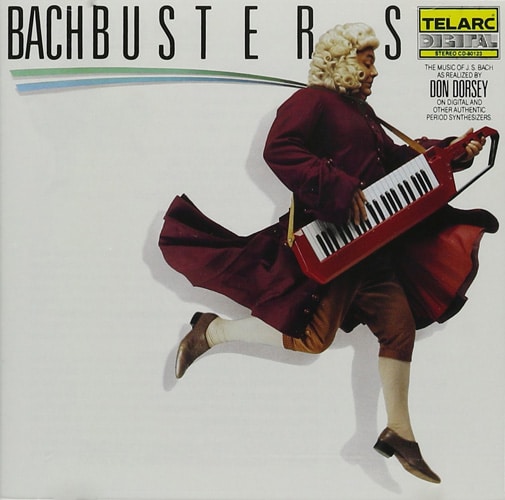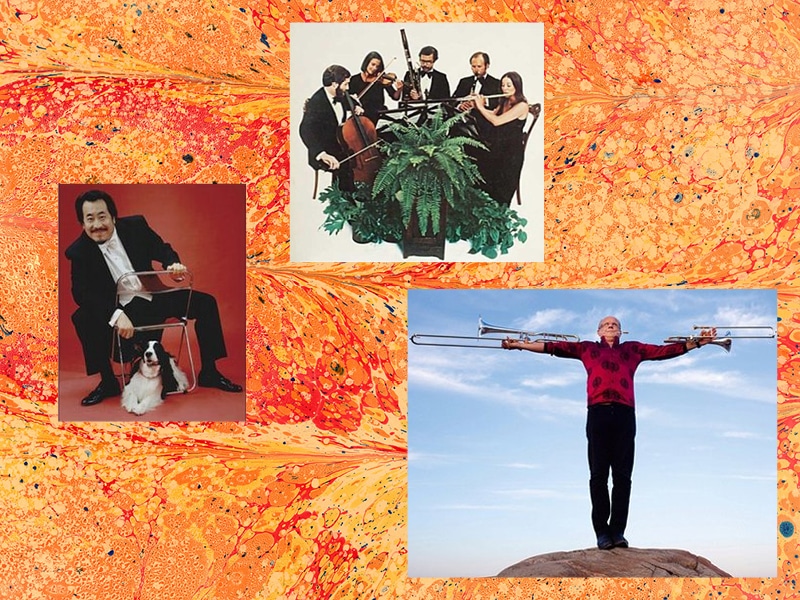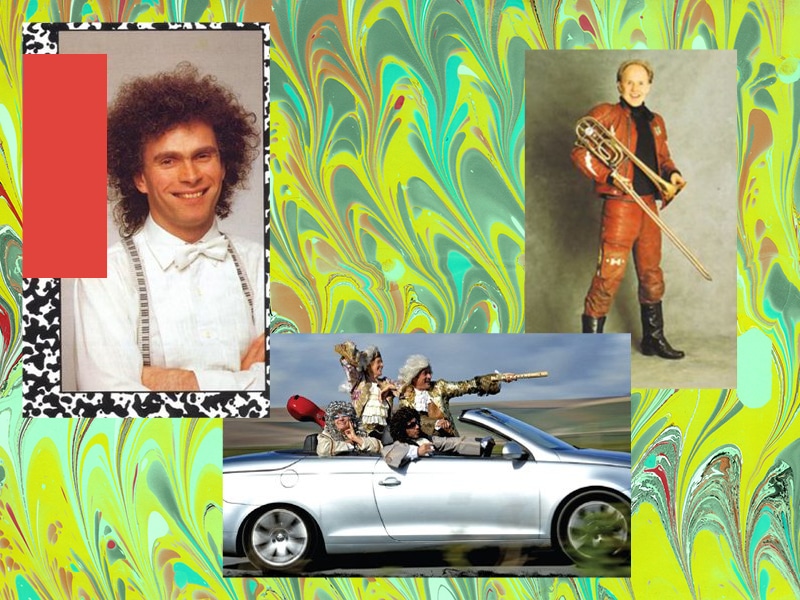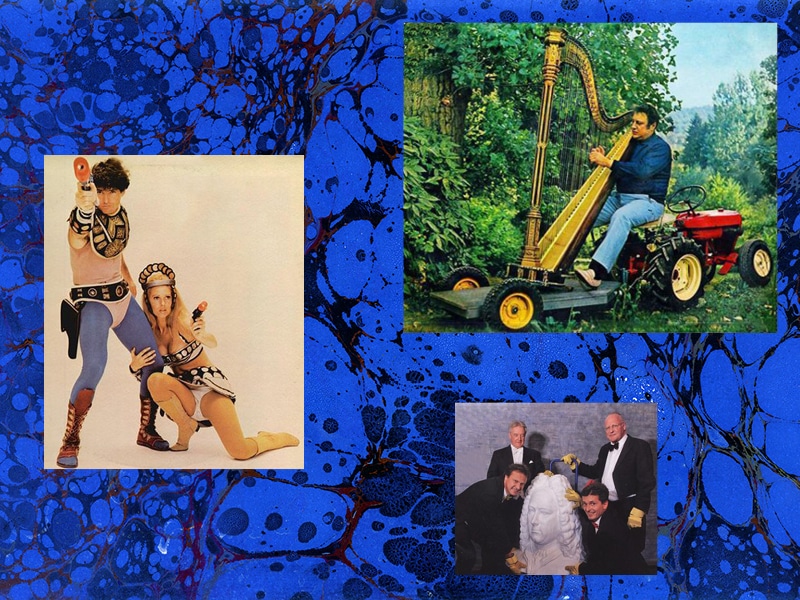Hey, did you know that classical music is actually really, really cool? The composers were “insane rock stars” who behaved outrageously and had lots of sex! In fact, Franz Liszt was the world’s first rock star! …Or was it Beethoven? Maybe it was Mozart. In any case, their behavior definitely qualifies them as rock stars, which makes them relevant to today’s youth. Also, the “Rite of Spring” was so hardcore that it caused a riot! It was the very first mosh pit. So cool. But in case you need more convincing, here’s Bach playing a keytar:

If you’re a classical music lover who spends any time on the internet, chances are you’ve encountered these statements, or something similar. Nowadays, they’re typically found on websites that don’t specialize in classical music, but that cultivate audiences of People Who Like to Know Things; the examples I linked above come from NPR, Mental Floss, Nerdist, and Cracked. Yet professional classical music marketing campaigns also use this strategy, from album art to promotional brochures. All of these are efforts to convince young people that classical music is cool—because, after all, nothing is cooler than something you have to be told is cool.
This cool-washing trend attempts to counter a prevalent perception that classical music is boring. If you’re on this site, chances are you already believe that classical music isn’t boring. But…is the opposite of “boring” necessarily “cool”? It’s a false dichotomy that ends up forcing classical music into a position that it doesn’t comfortably occupy.

One of the problems with “cool” is that it’s constantly changing. Often, these arguments hinge on, “This music drove audiences wild back then, so you should have the same reaction now!” It’s an attempt to link the past to the present through the phenomenon of popularity, borrowing whatever signifies “cool” in the present. But when you tie some aspect of classical music to a specific contemporary reference, you risk that reference looking dated in a few years. This opens your efforts up to ridicule, as is the case for this music video and these vintage classical album covers. (Granted, quite a few of these were meant to be humorous, but some are earnest.)
A common thread in a lot of these efforts to make classical music “cool” is that, rather than directing people to the music, they instead focus on everything surrounding the music, particularly outlandish personalities of composers and extreme audience reactions. Music has had a long, contentious history of fixating on composers, and placing them in a current context has the effect of humanizing them, making them less like marble statues and more like people we’d like to know.
Miloš Forman’s 1984 film “Amadeus” managed to employ both strategies, introducing audiences to Mozart’s music while replacing a mental image of the composer in immaculate wigs and prim velvet jackets with a laughing, farting goofball who lived to party. This latter effort fit well with the 1980s zeitgeist. After all, pop star Falco’s response to the film, his international hit “Rock Me, Amadeus,” has nothing to do with Mozart’s music and everything to do with his trappings.
So, does it work? Does framing classical composers as “cool” get young people interested in classical music?
For the most part…no. Again, nothing seems less cool that having people try to convince you that something’s cool. People aren’t fooled by that. It has the effect of covering a piece of broccoli with chocolate sauce—it only draws attention to the fact that broccoli definitely is not chocolate.

What does work, then? My evidence is admittedly anecdotal, but when I ask people what got them interested in classical music, they answer with things like: cartoons, movies, television shows, commercials, watching a live performance, learning an instrument. One thing that all these answers have in common is that they are all about experiencing classical music as music. Some other people mention getting interested through gateways like classical-esque sounds in the Beatles, or movie and video game soundtracks—though the division between “movie music” and “real music” has always been blurry (Shostakovich and Copland wrote for movies, after all), and there’s a whole scholarly subfield called ludomusicology devoted to the study of video game music. In any case, for most people I talked to, their interest was piqued not by being told that they should like the music, but by hearing music itself.
If we return to the example of “Amadeus,” yes, it did spark a Mozart renaissance in the 1980s. However, the movie did far more than just present the composer as a proto-rock star. It gave many in the audience their first encounter with Mozart’s music, from Salieri’s euphoric description of the “Serenade for Winds” to the portentous strains of the Requiem at the climax. It did more than demonstrate how popular this music was in its own time; it provided new contexts that allowed the audience to experience the music for themselves as not boring, but exciting.
Now, music history is important—I write a blog about getting the facts in music history right, so it’s a major concern to me. But I don’t believe that history is the hook for attracting new listeners. Learning history can deepen the appreciation for the music, but the initial spark comes from aesthetic experiences, not intellectual ones.
Besides, as a musicologist, I often get annoyed by “classical music is cool” campaigns because of the way they mangle history to make their case. The fact is, 1784 isn’t 1984, nor is it 2017. There may be similarities, but if you rely too much on making them equivalent, you misrepresent the past. As writer L.P. Hartley famously observed, “The past is a foreign country: they do things differently there.” Part of what makes history interesting is that tang of foreignness.

Interestingly, we don’t see as many “cool” makeovers in other art forms—at least, not with the same air of desperation. We don’t regularly encounter Michelangelo wearing shades, or Mark Twain dabbing. For the most part, people accept that the visual arts are accessible, because we can understand them at sight. As for literature, it speaks our language and can make a case for itself. Perhaps the most notable exception to this tendency is William Shakespeare, whose arcane language can be a barrier to the uninitiated. Similarly, classical music seems esoteric. The popular conception is that it’s difficult and needs translation, and presenting it as “cool” is a way of arguing its relevance, and that it’s worth the extra effort to understand.
If you want to grow classical music’s audience (and you should), rather than arguing why people should like it, focus your efforts on giving them opportunities to encounter it and form their own associations with it. Share your favorite pieces. Organize performances for communities that might not otherwise get that experience. Again, don’t pre-interpret the music for them; let them come up with their own opinions. If they decide it’s cool, fine, but if not—that’s OK, too. After all, the opposite of “boring” isn’t “cool,” it’s “interesting.” ¶

